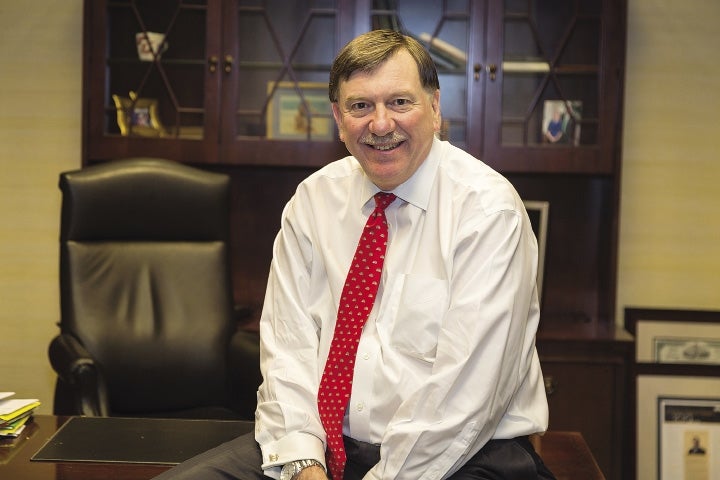Each year, the Hanover Insurance Group board of directors sits down with the Worcester company’s CEO and privately plans a succession for each top executive.
“You never know when someone might get sick, or die, or take another job,” said Michael Angelini, a longtime Hanover board member. “It’s not just a judgment at a point in time. It’s an evaluative process. And it’s not something you wait to do when you need to do it.”
Yet, this type of advance planning at large organizations is atypical, even though CEO tenures are usually short and companies’ profits are at stake.
Boards spend only two hours per year on succession planning, and 39 percent of boards could not claim a single viable internal candidate for CEO, according to a 2015 study by the Stanford University Graduate School of Business surveying 140 CEOs and board directors at public and private North American companies.
Inadequate planning may exacerbate the problem, according to a 2014 report on the world’s 2,500 largest public companies by the New York consulting firm Strategy&. CEOs who replaced someone who was forced out of the job typically had tenures themselves more than a year shorter than average, Strategy& found.
That lack of advance planning makes a difference to the bottom line. Average shareholder return for companies changing CEOs falls 3.5 percent in the year following the transition, Strategy& said. That’s an average of $1.8 billion lost compared to if the company had properly prepared for succession, according to the report.
“Too many companies still aren’t getting succession planning right,” the report said.
Main function of a board
Finding a new head of a company is one of the main roles of a board of directors, and something it has to do fairly often. The search firm Korn Ferry reported last year a typical CEO tenure at the country’s 1,000 largest companies is eight years, while earlier this year, a Harvard Law School report put the median at five years for S&P 500 companies.
Only 6 percent of those companies had a CEO stay longer than 20 years, the Harvard report said.
Angelini, the chairman at the Worcester law firm Bowditch & Dewey, led the Hanover board when in 2016 it had to find a successor to Frederick Eppinger, who was Hanover’s CEO for 13 years. The company more than doubled in size during Eppinger’s tenure, and the company was tasked with replacing someone who became an institutional figure.
The board had time on its hands, but had already considered what it would do anyway, Angelini said. It chose an outside hire, Joseph Zubretsky, who lasted 16 months and was replaced last fall by John Roche, an internal candidate who was hired during Eppinger’s tenure. In the latter case, the board knew it wanted to make a promotion instead of going outside the company.
Because of the stakes with succession planning, Angelini said he’s seen more of his law firm’s business clients put more of an emphasis on considering who their next leaders may be before they’re forced to find someone quickly.
“There’s a lot more attention on succession planning,” he said.
Looking to the future, not the past
When Mount Wachusett Community College was looking for a new president in 2016, it was no typical executive search. Mount Wachusett was looking to find a replacement for Daniel Asquino, a 30-year president and a leader who had his name affixed to a new $40-million science wing on the Gardner campus before he even left the job.
“Any time there’s a change in leadership, your team is going to be apprehensive,” said Tina Sbrega, the president and CEO of GFA Federal Credit Union and the chairwoman of the board of trustees at Mount Wachusett when it was tasked with finding Asquino’s successor.
“The search committee took that responsibility very seriously,” she said.
Ultimately, the college chose as a successor James Vander Hooven, then the vice president for enrollment management at Landmark College in Vermont.
Quinsigamond Community College in Worcester went through a similar challenge at roughly the same time. QCC was led by Gail Carberry for a decade until her stint ended in mid-2017.
Like Asquino at Mount Wachusett, Carberry has a campus building named after her. In her case, QCC’s downtown Worcester space on Franklin Street was named the Carberry Center a few months before the end of her tenure.
Much like Mount Wachusett, QCC chose Luis Pedraja – at the time, the interim vice chancellor of academic affairs for the 35,000-student Peralta Community College District in California – not because of any similarity to Carberry, but because of his ability to lead the college as its tackles the issues of the future.
“Nobody gets replaced,” said Sue Mailman, the QCC board of trustees chairwoman and the owner and president of Coghlin Electrical Contractors and Coghlin Network Services in Worcester. “There’s a new person and a new set of skills who sits in that seat.”
In the cases of Mount Wachusett and Quinsigamond, the same processes — formation of a search committee, a formal search for candidates, reporting on a recommendation to the state for confirmation — needed to be followed because they are public entities. But those helping to lead those processes had been through something similar themselves.
Sbrega replaced a 24-year executive, Charles Bowles, when she became CEO of GFA Federal Credit Union in 2009. Mailman took over her family’s business from her father, Ted Coghlin. Mailman was shown the ropes during a long transition period but never felt like she was replacing her dad.
“Sue’s the next president,” she said of the company’s mindset, “but that doesn’t mean she’s going to be Ted.”

